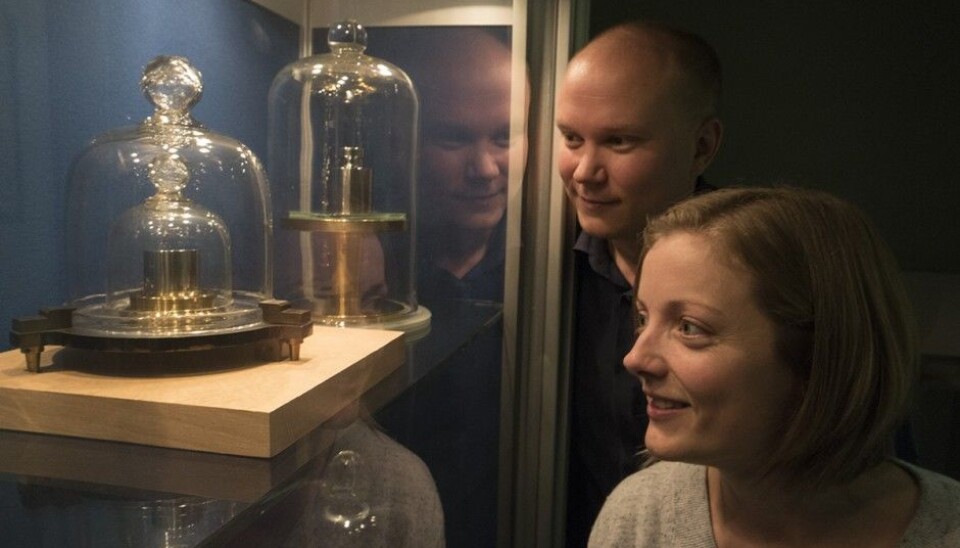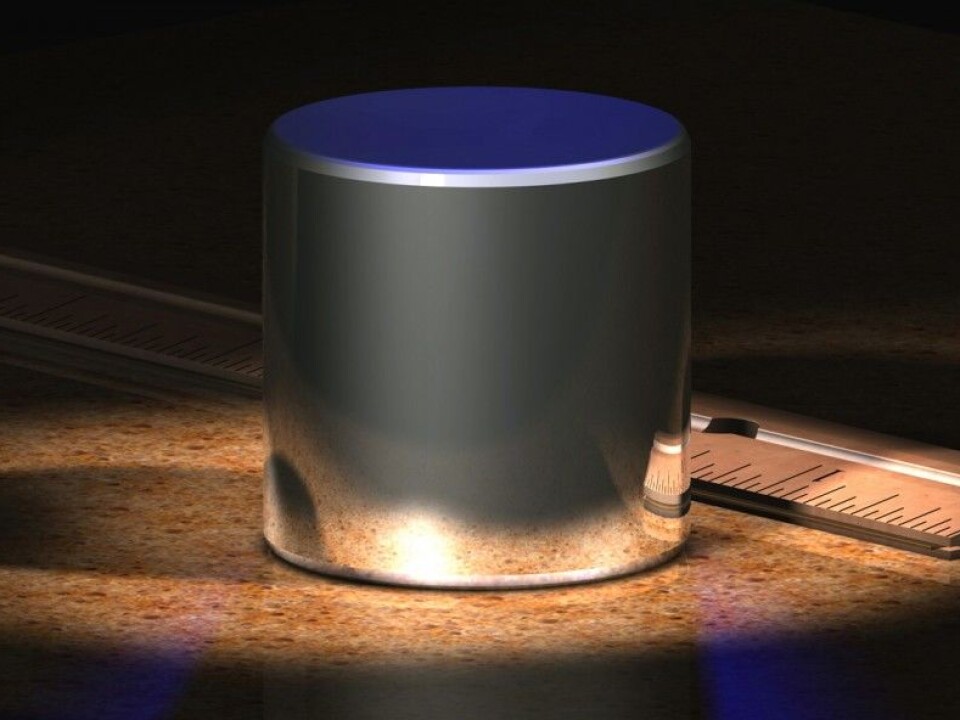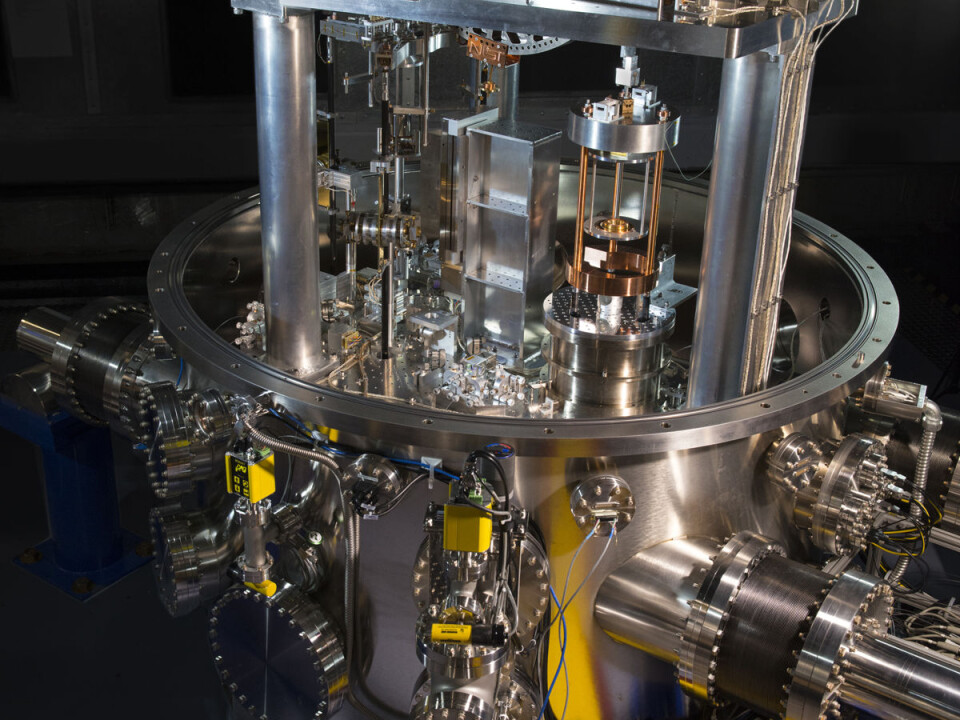
Retiring the prototype kilogram
The kilogram is the last international measurement standard that relies on a precisely crafted physical object. This standard-bearer will soon be replaced by space-age measurements based on physical constants.
In its glass case at the Norwegian Metrology Service outside of Oslo, Norway’s standard kilogram looks like a museum object on display.
In fact, this and its companion weights across the globe are soon scheduled to become museum pieces. They are the last physical holdouts in the esoteric world of weights and measures, a discipline called metrology. If all goes according to plan, the physical standard kilo will be replaced in May 2019 with a standard based on unchanging physical constants.
Pekka Neuvonen and Marit Ulset Nordsveen at the Norwegian Metrology Service are involved in this transition. Neuvonen has responsibility for Norway’s standard kilogram at the Norwegian Metrology Service, while Nordsveen has studied measurement methods and has an overview of the work with the new units of measurement.
The purpose of the change, Neuvonen says, is to “free the kilogram from being linked to a physical object."
Le Grand K

Large parts of our international measurement system — the SI system — are still tied to the mass of a very special cylinder in Sévres outside Paris.
The cylinder has been nicknamed Le Grand K — the Big K. The French cylinder is the international prototype for one kilogram — the unit for mass in the SI system.
The Norwegian kilogram at the Norwegian Metrology Service and its cousins across the globe are essentially copies of Le Grand K.
The kilogram is the last unit of measurement that is defined by a physical object. The physical metre in Sévres was retired in 1960.

Now the metre is defined by the speed of a physical constant, the speed of light in a vacuum.
A metre has been defined to be equal to the distance light travels in 1/299 792 458 seconds. The speed of light, is, to the best of our knowledge, unchanging, at least for the next million years or so, which means that this prototype metre should remain unchanged, too.
A physical object, like a bar the length of a metre, can change over time. In fact, the kilogram — Le Grand K — may have shrunk.
Small differences matter
It’s easy to forget that small changes can make a big difference. If an airline plant in France orders a very precise part from China, and it is a fraction of a gram off in weight, it could have disastrous consequences.
It’s known that Le Grand K has changed since it was created in the late 1800s. Not much, fortunately, but enough that the metrologists — the scientists who specialize in measuring systems — are worried.
To protect it, Le Grand K has been kept in a vault. It is 90 per cent platinum and 10 per cent iridium. The combination is almost as resistant to chemical changes as gold, but is much harder. To the eye, it is as glossy and scratch-free as when it was crafted in 1889.
Still — time makes its mark. Even platinum reacts a little with the air and can attract a thin layer of dirt. This dirt has to be cleaned away, first by brushing the prototype with suede soaked in ether and alcohol. Then it is blown clean with steam made from double distilled water and allowed to dry for about a week.
Is that good enough? Nobody knows for sure. But the metrologists have observed changes in Le Grand K and its copies in Norway and many other countries. Their weights are changing in comparison to each other, for reasons that are not well understood.
And the problem is, of course, that no one can tell if these small differences are due to changes in Le Grand K, or the prototypes — or both.
Physical constants
Now metrologists will define the kilogram based on a physical constant number that says something basic about relationships in the Universe.
That way, the kilogram will be defined in a way that is immutable, like the metre. But unlike the metre, which relies on the speed of light, the kilogram will rely on Plank’s constant. This number describes the relationship between the colour of a light particle and the energy it has.
Red light has less energy. Blue light has more energy. But how much more? Planck’s constant is used to help make this calculation. It’s a number that is vanishingly small —6.62607004 × 10-34, or six-tenths of a millionth billionth billionth billionth. It is measured in units called joule-seconds.
Watt balance
Physics tells us that there is a connection between electrical charges and mass. The device used to measure this is called the watt balance or the Kibble balance, named after the British physicist Bryan Kibble.
A Kibble balance looks a little bit like a scale, where one pan is for the object being weighed, while the second pan is used to add weights of a known amount until the two pans are balanced.
The Kibble balance can measure mass by balancing the mass with the force that is generated when electric current flows through a coil in a solid magnetic field — which is how an electric motor works.
The more current through the coil, the stronger the magnetic field and the stronger the force. Eventually, the magnetic force balances the weight of what we want to measure, and the weight can be measured using electricity.
Le Grand K, Planck’s constant and the Avogadro constant
However, you can’t just plop Le Grand K on top of a Kibble balance to set the new constant for a kilogram. First, metrologists had to establish, with the greatest precision possible, the value for Planck’s constant. Then they can use the Kibble balance to determine a new standard for the kilogram based on Planck’s constant.
But just to be on the safe side, metrologists are also looking at another, complementary way to establish a prototype for the kilogram, based on a chemical number called the Avogadro constant.
This constant is the number of atoms in a defined unit, called a mole, of a substance. Defined as 6.02 x 1023, or 602,000,000,000,000,000,000,000, Avogadro’s constant is as large as Planck’s constant is small. Using this number, metrologists can define the kilogram based on the size of an ultra pure monocrystalline silicon sphere. This second approach is still under development.
If all goes according to plan, Le Grand K will be replaced by the new definition of the kilogram based on Planck's constant on May 20, 2019 — which is metrological day.
But until then, Le Grand K will have to bear the heavy weight of being the standard kilogram. And Pekka Neuvonen and Marit Ulset Nordsveen will still have to lock up its physical Norwegian counterpart to keep it safe.
-------------------------------------






























